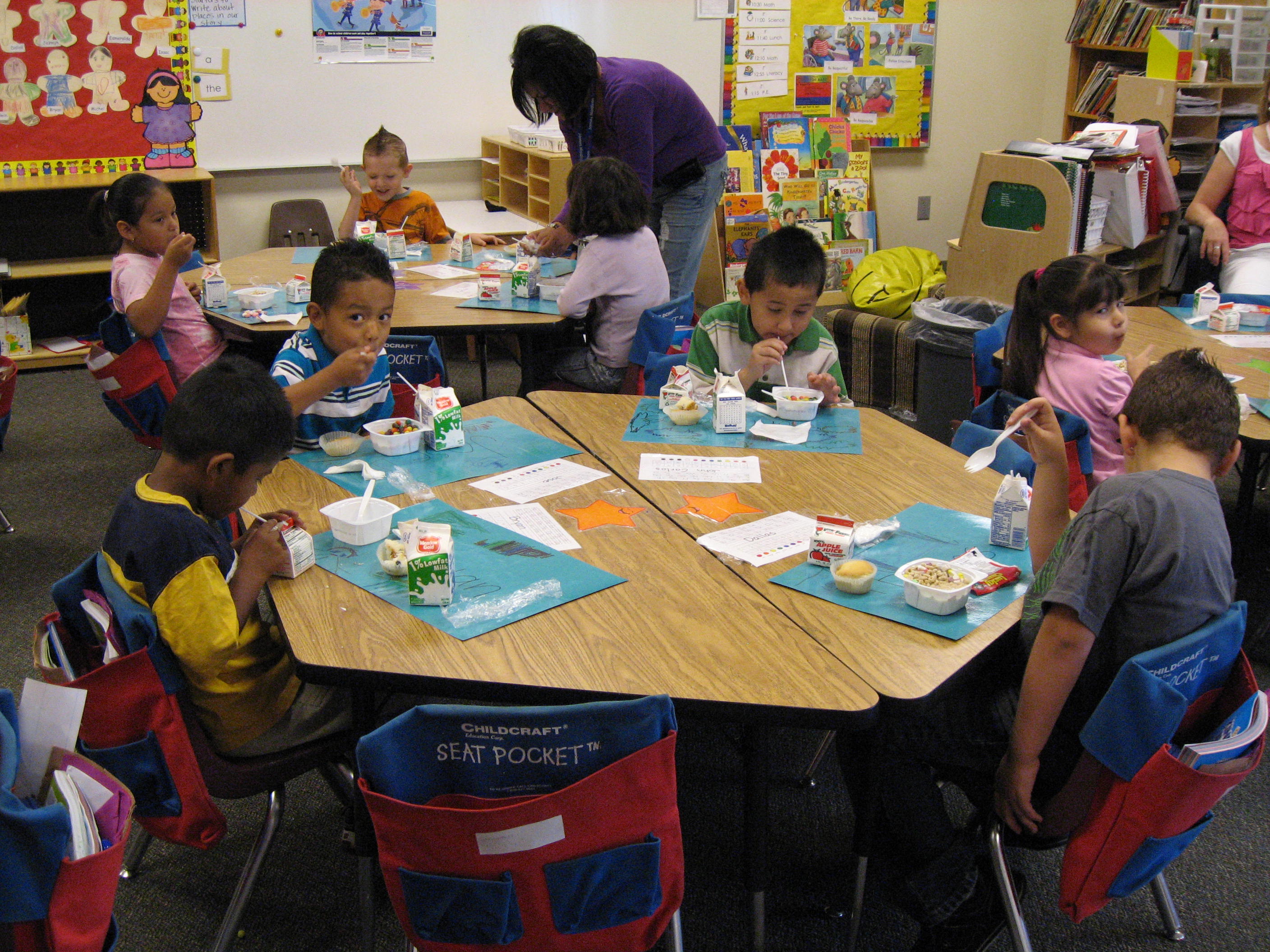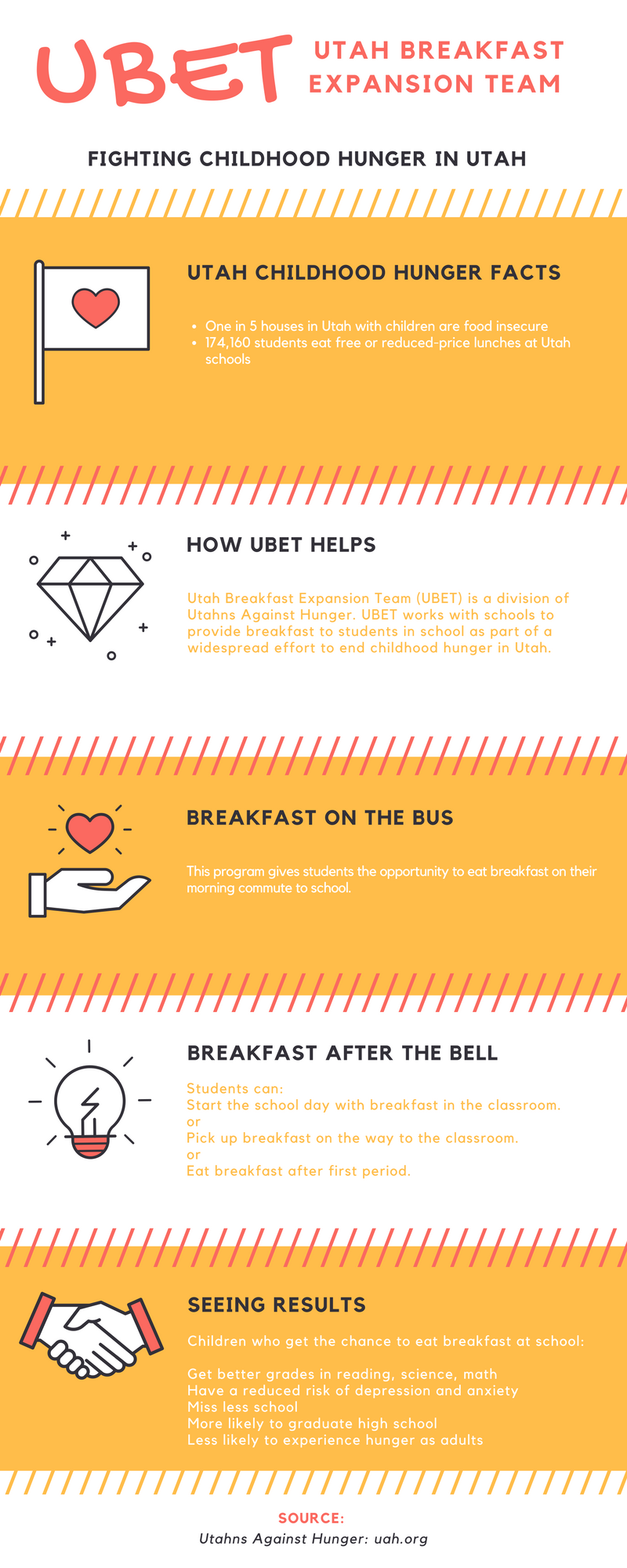
One of the main issues involving childhood hunger in Utah is only 34 percent of students who qualify for free or reduced-price meals are getting school breakfast, according to No Kid Hungry.
This national organization works with state legislators and school systems to ensure children are getting healthy, adequate meals.
Students start the day without a nutritious meal, and this affects their overall health and ability to focus in school.
Utah ranks last in the nation for school breakfast participation, according to the Food Research and Action Center.
Marti Woolford is the child nutrition advocate for Utahns Against Hunger.
Woolford works with the Utah Breakfast Expansion Team to implement the federal school breakfast programs in Utah school districts.
This breakfast program includes Breakfast After the Bell, which involves serving kids breakfast in the classroom at their desks as part of the regular school day. Another way to implement the program is with a “Grab and Go” option that serves breakfast right when children get to school.
“When we talk about breakfast in the classroom, teachers are often worried about losing teaching time. They’re so busy as it is,” Woolford said. “But what they eventually see is that their students are more focused.”
Woolford and Utahns Against Hunger recently partnered with the Utah Breakfast Expansion Team to release a report telling success stories of school districts that implement breakfast programs. Click here to read about other Utah programs that are fighting childhood hunger.
“What we generally see from teachers with the breakfast program is that kids are more attentive and ready to learn,” Woolford said. “Teachers also say the kids are more calm, and that they are tardy or absent fewer times.”
Woolford addressed the need for summer food programs that give kids healthy meals when they don’t have access to school meals.
“We want to be sure kids are getting the nutrition that they need, especially when they’re not in school,” Woolford said.
These summer meals programs are managed by the Utah State Board of Education Child Nutrition Programs.
“We serve food where kids already are,” Woolford said. “Kids are more likely to go to a park to eat and see their friends than go back to school to get a meal.”

Woolford mentioned that Utahns Against Hunger also works on Capitol Hill to advocate for bills that affect low income families and hungry children.
“We don’t get a win that often, but that’s why we do this work,” Woolford said.
She said the breakfast program and other initiatives to fight childhood hunger have long-lasting effects.
“When kids are fed well, they do better in school,” Woolford said. “They’re more likely to graduate high school and get a better job. Why wouldn’t we want to invest in that?”
Woolford addressed some of the obstacles Utah faces; the fight against hunger, and poverty in general.
“I wish we would slow down on viewing poverty as a moral issue, especially here in Utah,” Woolford said. “There are all these stigmas of poor people as lazy or unwilling to work, but that’s just not our experience. They’re doing all they can just to get by.”
Woolford mentioned other efforts by Utahns Against Hunger to deliver more nutritious meals to healthy children.
“We do a lot of advocacy education,” Woolford said. “We encourage people to call their congressional representatives and be a voice for change on this issue.”
“More schools are setting up food pantries, especially in high schools, where students in poverty often feel responsible for the younger kids in their households,” Woolford said.




